Let me introduce you to my dad — he’s worked in the restaurant industry basically his entire life and is currently the executive chef at Buona Via in Horsham, PA. The restaurant industry is tough, and the hours are looooong. My dad’s a superhero, though — he has always made time to hang out with me (and my little sisters) despite his super busy job. One of the many cool things he has done with me is (you guessed it!) taught me how to cook.
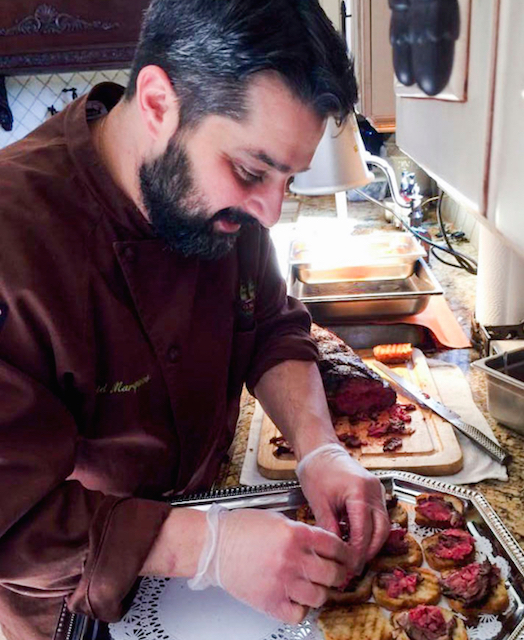
Photo by Aprile Marques
It wasn’t always easy. There were definitely times in the kitchen that my dad looked at me (and whatever I was trying to do) and probably sprouted gray hairs on the spot.

GIF courtesy of giphy.com
There were also definitely times where I rolled my eyes like some kind of kitchen know-it-all as my dad proceeded to show me what I was doing wrong.
All in all though, my dad and I make a pretty good team. And thanks to him, I’ve learned tons about cooking and being in the kitchen.

GIF courtesy of giphy.com
So, without further ado, let me share 9 of of the my favorite cooking tips and tricks that I’ve learned from my dad over the years.
1. Mise en Place
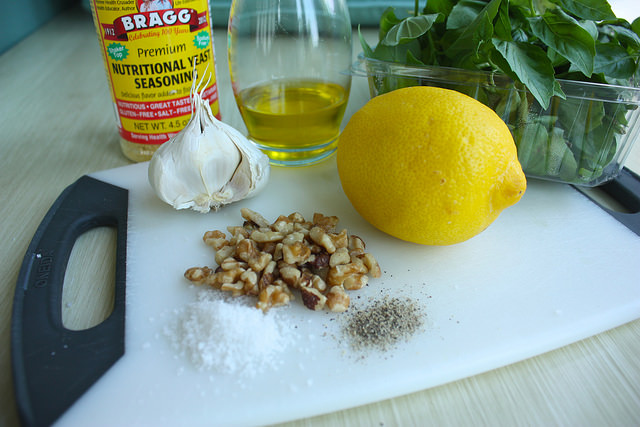
Photo by Kristine Mahan
Mise en what? Mise en Place is really just a fancy (and French) way of saying “putting in place.” So basically, just have everything in its place, set up, and ready to go before you start the actual cooking. That includes having all your ingredients cut up or measured out, and having all your tools set aside, ready for use.
If you haven’t realized it yet, this also means reading through an entire recipe (if you’re using one) before starting anything. You don’t want to be in the middle of cooking and get to step seven only to suddenly realize you need an entire cup of diced carrots stat. This leads to burnt or overcooked food, and that’s no fun at all. Skip being stressed in the kitchen and prep everything beforehand.
2. The Kitchen Towel Cutting Board Trick
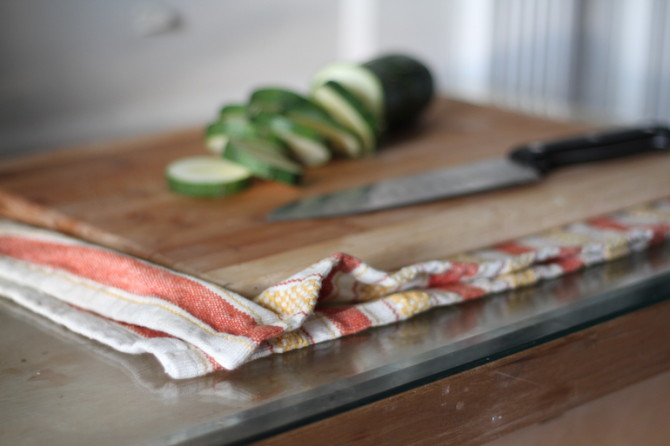
Photo by Sarah Silbiger
This is something I’ve seen my dad do in the kitchen for as long as I can remember. Everyone here likes their fingers, right? Before prepping for whatever you’re making, wet a kitchen towel with a little water, wring it out, and place it underneath of your cutting board. This helps keep the cutting board from moving around while you’re cutting anything.
3. “The Claw”
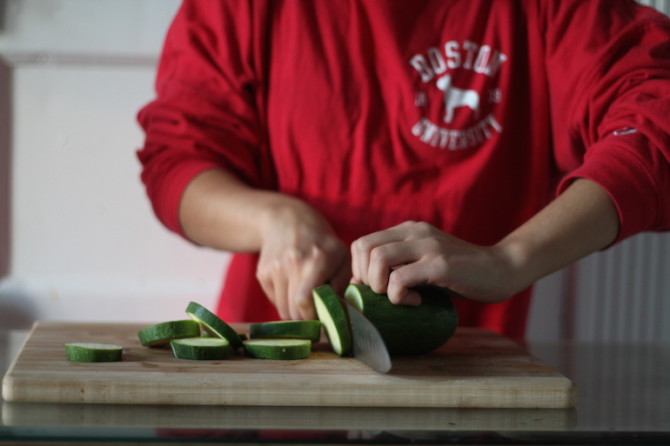
Photo by Sarah Silbiger
Speaking of keeping all of your fingers, I present to you the next tip: mastering the Claw. Make your non-dominant hand look something like a claw by folding all your fingers (including your thumb) in. Use this hand to hold the food you’re cutting. Not only does it keep the tips of your fingers safe and out of the way, but this hand can also help guide your knife along.
4. Hold your knife correctly.
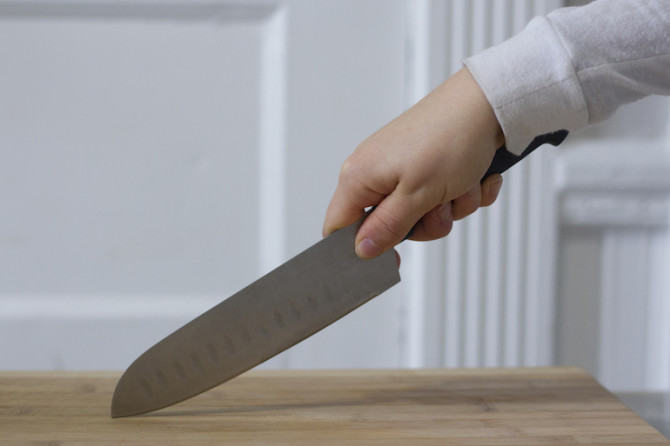
Photo by Sarah Silbiger
Learning to hold your knife correctly will not only help you prep more quickly and efficiently, but it’s gonna keep you from hurting yourself. Are you sensing a common theme yet? Start by placing your thumb on one side of the knife, and your index finger on the other side, like in the photo above. Grip the handle of the knife with your other three fingers. It might feel strange to hold your knife this way at first, and it may take some practice before it feels natural.
5. Don’t hold your knife too tightly.
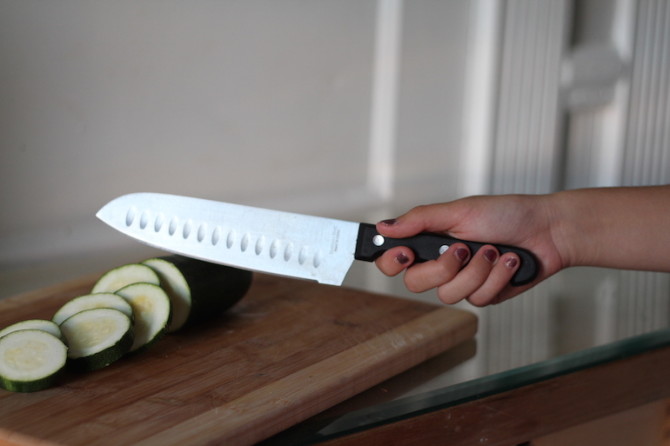
Photo by Sarah Silbiger
This is something my dad almost always mentions to me. When I’m not away at school, I cook at home a lot, and I always have to remind myself not to hold my knife with some kind of death grip (like the bottom photo). I know it may seem like holding your knife tightly would give you more control, but you should really try to keep your hand more relaxed (like the top photo). This will help keep your hand from getting tired.
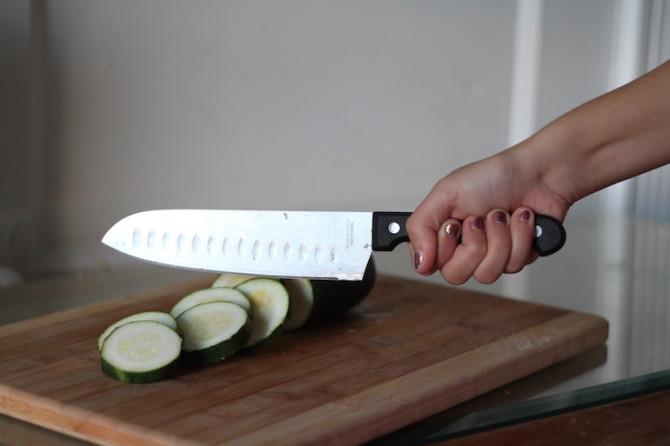
Photo by Sarah Silbiger
#SpoonTip: Refer to tip 4 for how to properly hold your knife, including where your fingers should be. The pictures for tip 5 are only supposed to provide a sense for the type of grip you should have.
6. Keep your knives sharp.
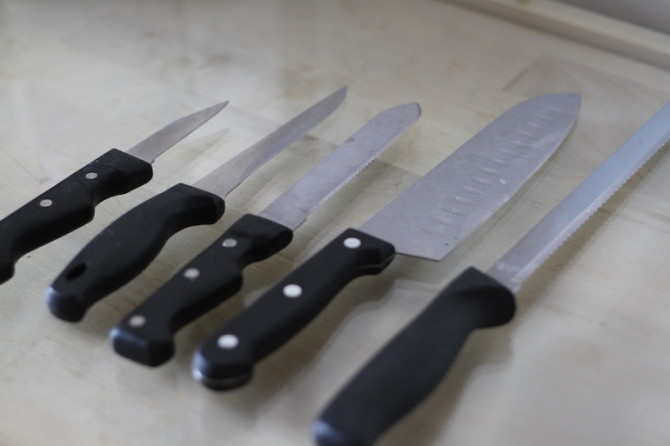
Photo by Sarah Silbiger
“Dull knives lead to cut hands.” This is a direct quote from my dad. As emphasized earlier, fingers and hands are important (duh), and we don’t want to lose or hurt any of them. Your knives should be sharp! After researching what knives you should have in your kitchen, take them somewhere like Sur la Table or another kitchen/cookware store nearby whenever you need them sharpened. Or, consider investing in a sharpener so you can do it yourself at home.
7. Add salt and olive oil to your boiling water when cooking pasta.
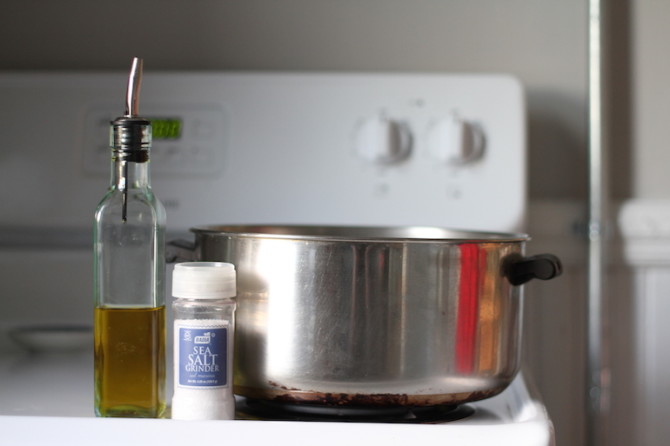
Photo by Sarah Silbiger
My dad is always one to add salt to the water he is boiling, be it for pasta or rice. Although it seems obvious, some people might skip this step. Adding salt to the boiling water adds flavor to the water, which is later absorbed by the food you cook in it. You can also add just a smidgen of olive oil to the water you’re cooking pasta in. This can help keep the pasta from sticking together. Be careful not to use too much though, or you’ll keep any sauce you’re adding to the pasta later on from adhering to it.
8. Use fresh ingredients, and know how to check their freshness.
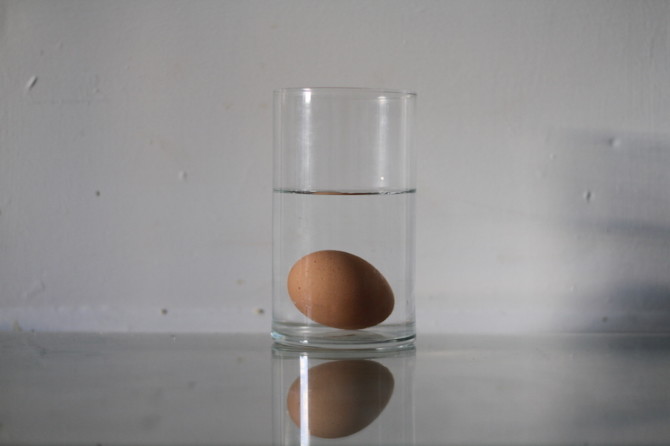
Photo by Sarah Silbiger
This tip is half knowledge from my dad, half knowledge from my grandma. But I mean, she’s his mom, so it’s all coming from a similar place, right? In general, my dad emphasizes the use of fresh ingredients, and tries to steer away from ingredients coming from cans or jars.
Going off of that, it’s important to learn how to check certain ingredients for freshness. For example, there is the egg test. My grandma taught me this when I was probably seven or eight years old, and first learning to make scrambled eggs. Fill up a (preferably transparent) cup about 2/3 full with water. Carefully drop your egg in and watch where it goes. If it sinks to the bottom (and stays there), it’s fresh. If your egg floats, toss it.
9. Have fun and be creative.

GIF courtesy of giphy.com
Most importantly, have fun when you’re cooking and be creative! If you’re using a recipe, try adding your own spin to it. Or, try making something totally out of your comfort zone. Use ingredients you have right then and there in your kitchen and try making something out of them. The options are endless. Hopefully you’re feeling a little inspired after reading these tips and are headed to your kitchen right now to try something out.
As a closing note, I just want to give another shout out to my dad for — among tons of other things — always being a constant source of support and inspiration, and for instilling a love for food and cooking in me. You’re the best.

GIF courtesy of dailymoss.com


